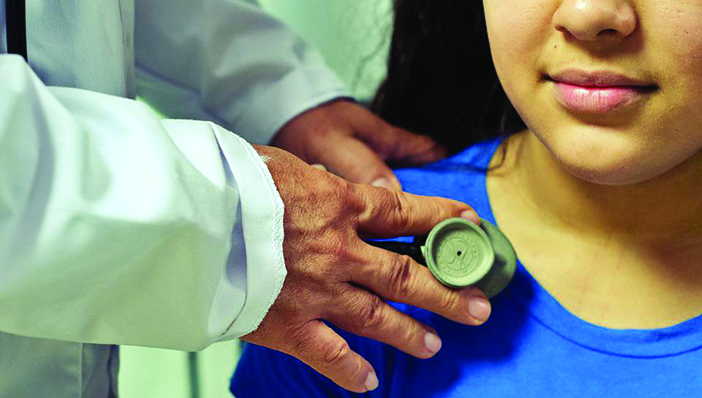Lockdowns and stress may have exacerbated a rise in cases in Rhode Island.
Pediatric type 2 diabetes diagnoses in Rhode Island quadrupled during the pandemic.
Jose Bernardo Quintos, MD, the chief of the Division of Pediatric Endocrinology at Hasbro Children’s Hospital, says in an average year there, the number of children diagnosed with type 2 diabetes hovers around 12 or 13.
“In 2020, we had about 25 kids coming in with type 2. So that’s almost double,” says Quintos, a professor of pediatrics. In 2021, “we had 48 kids being diagnosed.”
Type 1 diabetes is much more common in children, and that’s still the case; the Outpatient Diabetes Education Center at the hospital, which Quintos directs, usually gets 80 to 90 new type 1 patients each year.
But pediatric type 2 diagnoses were already ticking up before 2020, alarming providers. “It was unheard of a generation ago. It wasn’t a diagnosis,” says Lisa Swartz Topor, MD, MMS, who’s the fellowship program director of pediatric endocrinology at Hasbro Children’s Hospital.
More testing could explain some of the increase; pediatricians are finding diabetes during routine exams, in patients with few if any symptoms. “They’re being diagnosed incidentally, which is good,” Quintos says. “Their A1C is 6.5 or 7 percent”—just over the line to be considered diabetes.
That’s true among adult patients too, says Geetha Gopalakrishnan RES’98, MD, the interim chief of endocrinology, diabetes, and metabolism. “We, as a community, have gotten better at … identifying people earlier and starting them on treatment,” says Gopalakrishnan, an associate professor of medicine. “So since we’re testing more, we’re paying attention to it. … But I would say the biggest driver for diabetes going up is obesity, obesity, obesity.”
Topor, an associate professor of pediatrics, agrees that weight gain is behind many new cases of type 2, but there’s still a lot that doctors don’t understand. “There are people who have very, very elevated body mass indexes who are metabolically healthy. No diabetes,” she says. “And we have other people whose BMI is just a little bit elevated, and they already have diabetes.”
The skyrocketing rates over the past two years could be due to factors related to the lockdown. “People were staying at home, they’re not going to school, there’s no physical activity, and a lot of them gain weight,” Quintos says.
Also out of kids’ control is their socioeconomic status. Even without a pandemic, families with low incomes may struggle to afford fresh produce and a home in a safe neighborhood where kids can play outside.
Stress—whether due to income inequality, COVID lockdowns, or myriad other factors—may play a role too. But, as Gopalakrishnan says, “it’s kind of like the chicken or the egg.”
“When you’re in a really stressful situation, there’s regulatory hormones that go up, and steroids and other factors go up,” she says. “When these levels go up, blood sugars tend to rise. So we don’t know if it’s a marker for poorer outcomes, or people who tend to have dysregulation with their glycemic symptoms tend to have poorer outcomes. And you can’t tease that out with the studies we have.”
Then, of course, there’s genetics. “I can tell you from the day a kid is born, if all four grandparents have diabetes, and mom has high blood pressure, and dad has high cholesterol, this kid is going to be at risk for those things,” Topor says.
Many of these kids have a tough road ahead. “How [type 2]progresses is much more aggressive than in adults,” she adds. “The rate of progression of their decline in their ability to make insulin appears to be at a faster rate than an older person. … This is a huge problem.”




